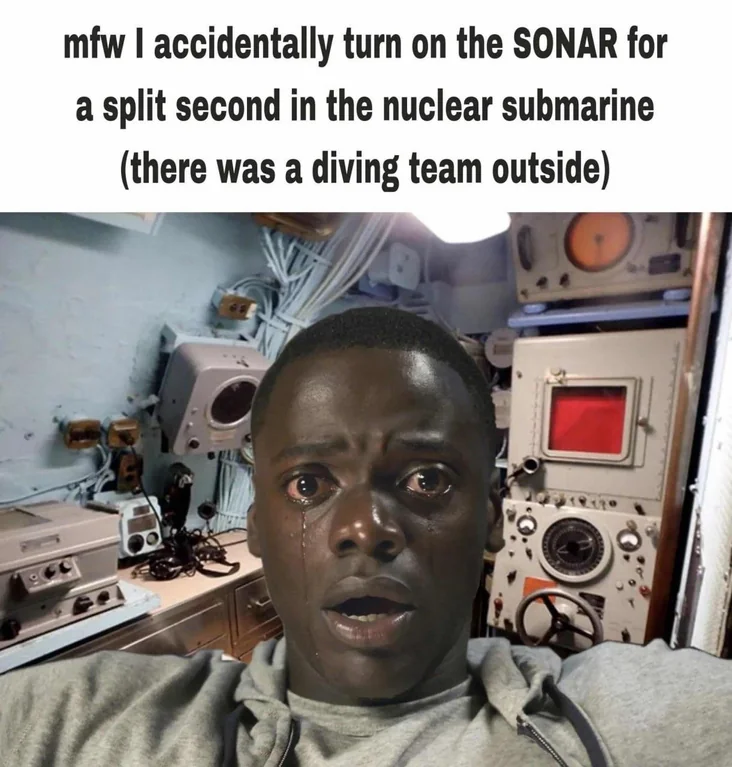this post was submitted on 08 Jan 2025
239 points (99.2% liked)
NonCredibleDefense
3678 readers
364 users here now
Rules:
- Posts must abide by lemmy.world terms and conditions
- No spam or soliciting for money.
- No racism or other bigotry allowed.
- Obviously nothing illegal.
If you see these please report them.
Related communities:
founded 2 years ago
MODERATORS
you are viewing a single comment's thread
view the rest of the comments
view the rest of the comments

Can you please explain to me, a simple person with no knowledge in that sort of thing?
I'm assuming the sonar emits a loud "ping" sound and the divers would probably deafened by it?
Edit: Holy shit ......
Thanks for all the great replies.
But holy shit ...
Military sonars are so loud that if you happened to be idly floating near one (let's say closer than 500 meters away) as it does one of its strongest pings, your entire body would cavitate into pink mist; it's weakest ping would rupture every organ in your body instantly, all of your bones would fracture in place and some of your blood at the skin surface would boil from the sonars ping causing rapid pressure changes right in front of whatever is supposed to remain of your face.
Imagine standing next to a hundred grenades as they all simultaneously explode, but also pretend you are spared from the heat wave of the explosion and not the blast wave.
Wait a minute
Have we been pulping marine wildlife this whole time? I just connected the dots there
There's two types of military SONAR: active and passive. Active SONAR is using pings and listening for the echo, but it's not very commonly used by submarines. Passive sonar is just listening out for engine noise from ships and prop noise from other submarines. Warships use active SONAR more because they're already noisy and so if they think an enemy submarine is in the area they'll use it to try and locate, but in peacetime it's mostly reserved for training exercises. It's still terrible for wildlife, even if they don't die it's very distressing and disorientating but it's not constantly scanning like a RADAR.